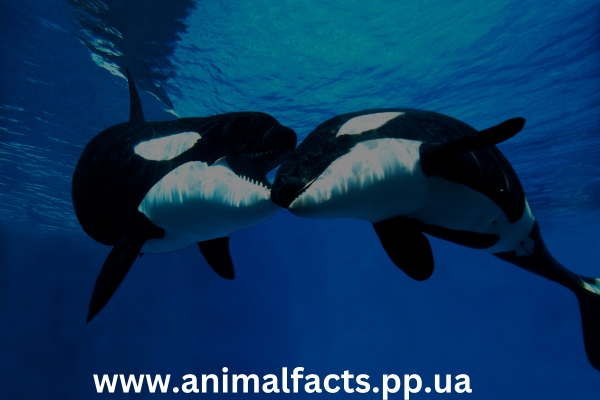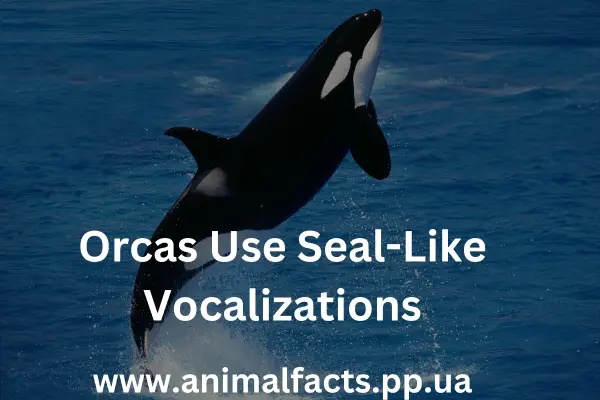How Orcas Use Seal-Like Vocalizations
In the animal kingdom, mimicry is a survival strategy used by many species. Some animals mimic the appearance of other animals to avoid predation or attract prey. Other creatures mimic the sounds of other species, like songbirds replicating tunes.
One of the most fascinating examples of vocal mimicry in mammals can be observed in orcas, also known as killer whales. These intelligent marine predators have developed seal-like vocalizations that likely help them hunt more effectively.
The Evolution of Deceptive Vocalization in Orcas
Orcas are highly social animals that live in tight-knit family pods. Like other cetaceans, they use echolocation clicks for navigation and communication.
They also have an extensive repertoire of whistles, pulsed calls, and vocalizations for signaling within their pods. Scientists have identified distinct “dialects” amongst different orca ecotypes or populations.
In addition to their own communications, some orca pods have learned to imitate the calls of other marine mammals. The whales incorporate these mimicked sounds into their own vocabulary, using them deceptively to hunt prey like seals or sea lions. This vocal mimicry enables them to get much closer before being detected.
Researchers first documented seal-like vocalizations in orcas in the late 1980s. These killer whales were recorded producing accurate copies of sounds made by harbor seals, Steller sea lions, and potentially other pinnipeds.
The orcas even mimicked the rhythm and pitch of the seals. This level of accuracy convinced scientists that the whales were intentionally trying to manipulate the behavior of prey species.
Since then, orca mimicry of seal sounds has been studied across multiple populations. Pods living in varied habitats like the North Pacific, North Atlantic, and Antarctic have all shown evidence of using misleading vocal cues when hunting. The behavior appears widespread throughout the species.
Importance of Vocal Mimicry for Orca Hunting
For orcas, the ability to mimic seal calls provides a clear hunting advantage. When they accurately reproduce seal noises, they can shift predation risks onto their prey.
Here are some of the key benefits mimicry offers orcas when hunting:
- Avoid early detection: Seals often colony together on land or ice floes. Their loud calls allow them to identify predators early while they are still far off. By disguising their presence with familiar vocals, orcas can get much closer undetected.
- Create confusion: When orcas mix their own vocalizations with seal sounds, it creates confusion amongst prey groups. Seals may be unsure of what is orca and what is seal, delaying their escape.
- Lure seals: Orcas can attraction seals by mimicking their noises. Curious seals may approach the source of familiar sounds, where orcas lie waiting to ambush them.
- Cover attacks: When orcas launch an open attack, they sometimes vocalize like seals. This masks the distress calls of actual seals, keeping other potential prey unaware of the threat.
Orcas are highly intelligent animals. Their ability to mimic seal sounds shows how they can think creatively and strategically to increase hunting success. Vocal mimicry demonstrates orcas’ capacity for deception, advanced learning, and behavioral adaptation.

Theories on How Orcas Learn Seal Vocalizations
Since orcas mimic seal sounds accurately, but do not actually produce the same vocal anatomy as true seals, how do they learn these abilities?
Researchers propose two primary theories:
- Social learning within pods: Orcas have strong social bonds and pass down behaviors culturally between generations. Calves may learn seal vocal mimicry from their mothers or other pod members through observational learning. They practice and refine the novel sounds.
- Eavesdropping on seals: As orcas travel through areas dense with seal populations, they have opportunities to listen to real seals calling. By eavesdropping, orcas can gradually learn the precise acoustics of seal vocals and incorporate them into their repertoire.
Both methods allow orcas to capitalize on their existing communication abilities. They can encode new sounds into their cognitive maps through experience. Killer whales have excellent memories, so once they learn accurate mimicry, the behavior likely becomes permanent within pods or clans.
Impact of Deceptive Vocalizations on Seal Prey
The use of deceptive vocal mimicry is having tangible impacts on orcas’ success in catching seal prey. Research on orca populations shows:
- More seal kills: In Antarctica, orcas that mimicked Weddell seals made 25% more seal kills than those using only orca calls. Mimicry improves hunting efficiency.
- Closer stalking distances: When orcas emitted seal calls, they were able to approach up to 50% closer to seal colonies before seals fled to the water. This allowed them to ambush seals from closer range.
- Altered seal behavior: After orcas begin mimicking seal calls in an area, the actual seals become much more reticent to vocalize. Their silence likely helps them avoid detection, but impacts communication.
Seals exhibit behavioral changes in response to orca mimicry, showing how the deceptive signaling is influencing predator-prey dynamics. Vocal mimicry gives orcas a distinct edge during hunts.
Wider Impacts of Vocal Mimicry and Deception
Beyond just orcas and seals, this phenomenon of complex vocal mimicry has wider scientific implications:
- It provides further evidence of orcas’ intelligence and adaptability as predators. Their ability to learn vocal deception could spread throughout populations.
- Mimicry in mammals is still rare and imperfectly understood. It demonstrates the potential for vocal learning that exists across intelligent species.
- It opens new questions about the cognition behind mimicry and whether orcas or other mimics truly understand their impact on prey species.
- Deception through calls adds to the evolutionary “arms race” between predators and prey. It may drive new adaptations in seals to better identify mimicry.
As researchers continue observing orcas hunting seals, they can learn more about the potential breadth of vocal mimicry behaviors across pods and populations. Orcas provide exciting insights into just how cunning and creative some mammal species can be.
The mimicry of seals by orcas highlights a remarkable ability that helps these predators hunt more successfully. By copying seal calls, orcas demonstrate their intelligence, adaptability, and sophisticated vocal skills. This phenomenon offers scientists fascinating insights into the dynamics of predator-prey interactions and the selective pressures that drive the evolution of mimicry.
Orcas’ use of deceptive vocalizations illustrates how some mammals can think creatively to outwit their prey through sound. Check out here more Amazing mammals facts and data.
FAQs:
Q: Why do orcas mimic seal vocalizations?
A: Orcas mimic seal vocalizations as a deception tactic to help them hunt seals more effectively. The mimicry allows them to get closer to seals before being detected, create confusion, lure in curious seals, and mask the distress calls of seals during attacks.
Q: How do orcas learn to mimic seal vocalizations?
A: Researchers propose two main theories. Orcas may learn vocal mimicry through social learning within their family pods, with mothers teaching calves. They may also learn by eavesdropping on real seals during encounters and incorporating the sounds.
Q: What types of seal sounds do orcas mimic?
A: Orcas have been documented mimicking various pinniped species like harbor seals, Steller sea lions, and Weddell seals. They copy the rhythm, pitch, and acoustic patterns of seal barks, grunts, and other vocalizations.
Q: Does vocal mimicry increase orcas’ hunting success?
A: Yes, studies show orcas using seal vocal mimicry make more kills, can approach seals more closely, and alter seal behavior compared to orcas using only orca calls. Mimicry provides a clear hunting advantage.
Q: How do seals react to orcas mimicking their vocalizations?
A: Seals exhibit altered behavior in response to orca mimicry. They become more reticent to vocalize, which likely helps them avoid detection, but impacts their communication. Seals have to adapt to this form of deception.
Q: Are all orca populations able to mimic seal vocals?
A: No, not all orcas have developed this ability. But scientific evidence shows that seal mimicry is widespread in orcas across varied habitats like the Pacific, Atlantic, and Antarctic oceans.
Q: Is vocal mimicry unique to orcas?
A: No, though it is rare in mammals. Other examples include lyrebirds, bats, elephants, and some primates. But orcas display an especially advanced capability for mimicry and deception through sound.
Q: Why is orca mimicry interesting to scientists?
A: It provides evidence of orcas’ intelligence, adaptability, and vocal cognition. It also demonstrates an evolutionary “arms race” between predators and prey as seals try to detect deceptive calls.


